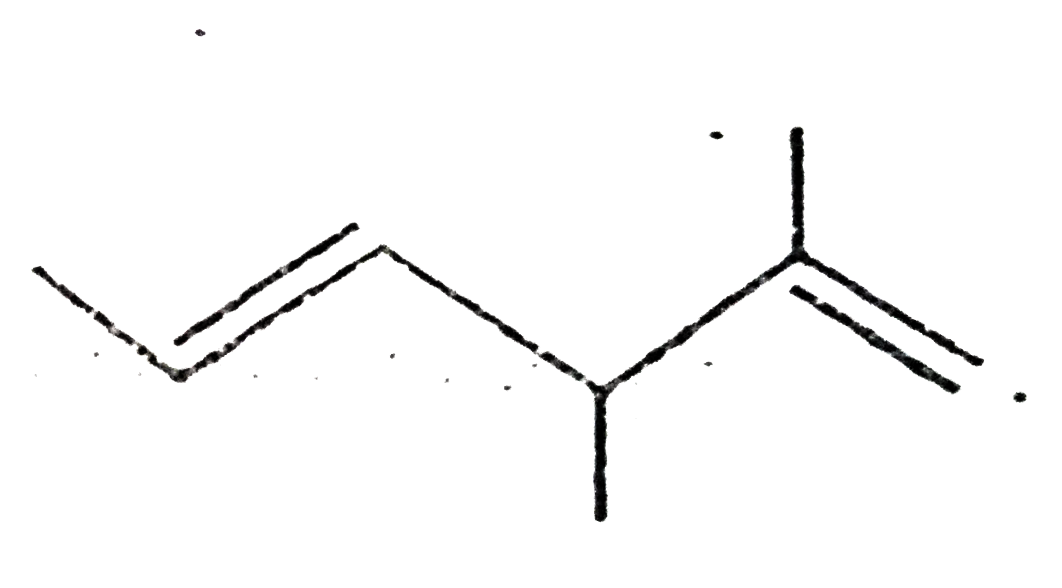In the acid catalyzed dehydration of alcohols to alkenes, the intermediate species formed is
free radical
carbocation
carbanion
hydronium ion
The correct Answer is:B
To solve the question regarding the intermediate species formed in the acid-catalyzed dehydration of alcohols to alkenes, we will follow these steps:
1. Understanding the Reaction:
- The reaction involves the dehydration of an alcohol in the presence of an acid catalyst. The general formula for this reaction can be represented as:
AlcoholAcid−−→Alkene+H2O
2. Identifying the Acid Catalyst:
- A common acid used for this dehydration process is sulfuric acid (H₂SO₄). This acid acts as a dehydrating agent.
3. Protonation of the Alcohol:
- The first step in the mechanism is the protonation of the alcohol's hydroxyl group (OH) by the acid. The lone pair of electrons on the oxygen atom of the alcohol attacks a proton (H⁺) from the acid, forming an oxonium ion:
R-OH+H+→R-OH+2
- Here, R represents the alkyl group.
4. Formation of the Carbocation:
- The oxonium ion (R-OH₂⁺) is unstable and can lose a water molecule (H₂O) as a leaving group. This results in the formation of a carbocation:
R-OH+2→R++H2O
- The carbocation (R⁺) is a positively charged intermediate that is crucial in the dehydration process.
5. Elimination to Form Alkene:
- The final step involves the elimination of a proton (H⁺) from the carbocation, which leads to the formation of a double bond, resulting in the alkene:
R+→Alkene+H+
6. Conclusion:
- The intermediate species formed during the acid-catalyzed dehydration of alcohols is a carbocation.
Final Answer:
The intermediate species formed is carbocation.
- The reaction involves the dehydration of an alcohol in the presence of an acid catalyst. The general formula for this reaction can be represented as:
AlcoholAcid−−→Alkene+H2O
- A common acid used for this dehydration process is sulfuric acid (H₂SO₄). This acid acts as a dehydrating agent.
- The first step in the mechanism is the protonation of the alcohol's hydroxyl group (OH) by the acid. The lone pair of electrons on the oxygen atom of the alcohol attacks a proton (H⁺) from the acid, forming an oxonium ion:
R-OH+H+→R-OH+2
- Here, R represents the alkyl group.
- The oxonium ion (R-OH₂⁺) is unstable and can lose a water molecule (H₂O) as a leaving group. This results in the formation of a carbocation:
R-OH+2→R++H2O
- The carbocation (R⁺) is a positively charged intermediate that is crucial in the dehydration process.
- The final step involves the elimination of a proton (H⁺) from the carbocation, which leads to the formation of a double bond, resulting in the alkene:
R+→Alkene+H+
- The intermediate species formed during the acid-catalyzed dehydration of alcohols is a carbocation.
The intermediate species formed is carbocation.
Similar Questions
Knowledge Check
- Question 1 - Select One
Complete the following statements by selecting the correct alternative from the choices given :
In the dehydration of alcohols to alkenes by heating with concentrated sulphuric acid, the initiation step is :Aformation of carbocationBformation of an esterCprotonation of alcohol moleculeDelimination of water
In the avove reaction the intermediate species are :
 View Solution
View SolutionDehydration of ethanol forms a gas
View SolutionAcid catalyzed hydration of alkenes except ethene leads to the formation of
View SolutionStatement-1: Acid catalyzed hydration of (1) involves rearrangement

and
Statement-2 The formed intermediate has potential for rearrangement.View SolutionAcidic dehydration of the following alcohols is in the order :
 View Solution
View SolutionThe product of acid catalyzed hydration of 2−pheny1propene is
View SolutionThe reagent used for the dehydration of an alcohol is
View Solution
